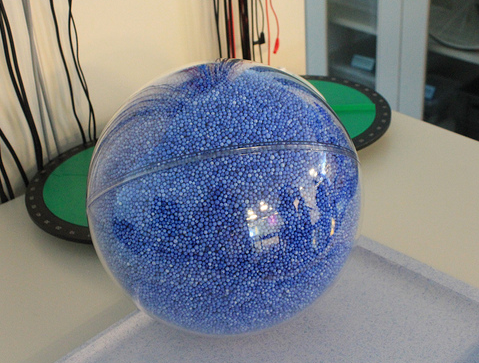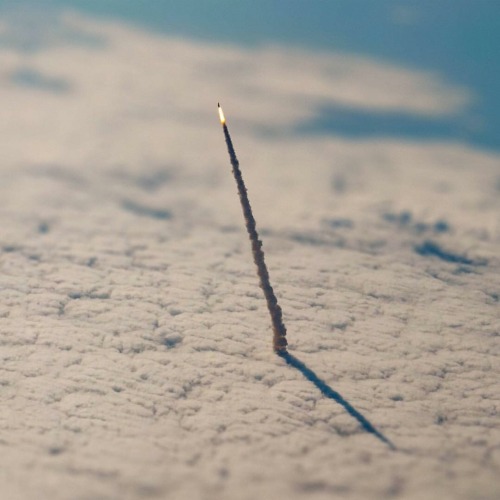How Curiosity Changes The Brain To Enhance Learning

How curiosity changes the brain to enhance learning
The more curious we are about a topic, the easier it is to learn information about that topic. New research publishing online October 2 in the Cell Press journal Neuron provides insights into what happens in our brains when curiosity is piqued. The findings could help scientists find ways to enhance overall learning and memory in both healthy individuals and those with neurological conditions.
"Our findings potentially have far-reaching implications for the public because they reveal insights into how a form of intrinsic motivation—curiosity—affects memory. These findings suggest ways to enhance learning in the classroom and other settings," says lead author Dr. Matthias Gruber, of University of California at Davis.
For the study, participants rated their curiosity to learn the answers to a series of trivia questions. When they were later presented with a selected trivia question, there was a 14 second delay before the answer was provided, during which time the participants were shown a picture of a neutral, unrelated face. Afterwards, participants performed a surprise recognition memory test for the faces that were presented, followed by a memory test for the answers to the trivia questions. During certain parts of the study, participants had their brains scanned via functional magnetic resonance imaging.
The study revealed three major findings. First, as expected, when people were highly curious to find out the answer to a question, they were better at learning that information. More surprising, however, was that once their curiosity was aroused, they showed better learning of entirely unrelated information (face recognition) that they encountered but were not necessarily curious about. People were also better able to retain the information learned during a curious state across a 24-hour delay. “Curiosity may put the brain in a state that allows it to learn and retain any kind of information, like a vortex that sucks in what you are motivated to learn, and also everything around it,” explains Dr. Gruber.
Second, the investigators found that when curiosity is stimulated, there is increased activity in the brain circuit related to reward. “We showed that intrinsic motivation actually recruits the very same brain areas that are heavily involved in tangible, extrinsic motivation,” says Dr. Gruber. This reward circuit relies on dopamine, a chemical messenger that relays messages between neurons.
Third, the team discovered that when curiosity motivated learning, there was increased activity in the hippocampus, a brain region that is important for forming new memories, as well as increased interactions between the hippocampus and the reward circuit. “So curiosity recruits the reward system, and interactions between the reward system and the hippocampus seem to put the brain in a state in which you are more likely to learn and retain information, even if that information is not of particular interest or importance,” explains principal investigator Dr. Charan Ranganath, also of UC Davis.
The findings could have implications for medicine and beyond. For example, the brain circuits that rely on dopamine tend to decline in function as people get older, or sooner in people with neurological conditions. Understanding the relationship between motivation and memory could therefore stimulate new efforts to improve memory in the healthy elderly and to develop new approaches for treating patients with disorders that affect memory. And in the classroom or workplace, learning what might be considered boring material could be enhanced if teachers or managers are able to harness the power of students’ and workers’ curiosity about something they are naturally motivated to learn.
More Posts from Alitheastronomer and Others

The loneliest of galaxies

Chemical flames.


#Space: Arp 256, a stunning system of 2 #spiral #galaxies in early stage of #merging http://ift.tt/1CMu20M via @esa

Jupiters Great Red Spot is likely a sunburn, not a blush. New science from NASAs Cassini Mission to Saturn based on lab and flyby data.
js


This is a model of how many Earth’s can fit inside the sun.
I'm adding this to the list of reasons I want to work there


This is Kjell Lindgren. He’s a NASA astronaut who just got back from 5 months on the International Space Station. There are two reasons why this picture is hilarious:
His wife is flawless and makes bad space puns to make him do household chores.
I have that shirt. Thousands of people have that shirt. That shirt is available at Target. Which means actual astronaut Kjell Lindgren, with his wardrobe already full of NASA-issued and logo-emblazoned clothes, was at Target, saw a NASA shirt, and was like, “Yes, I am buying this because this is what I want to spend my actual astronaut salary on.”
tl;dr NASA employs a bunch of fucking nerds

Tilt-shift photo of the space shuttle Endeavor by NASA
Well now I know what I would be doing if I won the lottery...

So you want to go to space ?
It suddenly struck me that that tiny pea, pretty and blue, was the earth. I put my thumb and covered one eye and my thumb blotted out the planet earth.
- Neil Armstrong
And ergo ‘Space’ became a part of my vocabulary from a very young age. All that i wanted to do was to become an astronaut and wander the oblivion space that lies beyond our wildest comprehension.

But how much is the ticket?!?
I hear if you try to buy it on a Tuesday at 2am you will get a GREAT fare!
Alright all jokes aside space travel is becoming available to regular citizens, well maybe regular isn’t the right word, wealthy citizens.

But just how wealthy do you need to be? How many banks should you plan on robbing before you pack your bags?
Well it depends on where you are going. ;)
Do you want to go on a spaceplane?

This is at about 60 miles above the Earth’s surface.
If Virgin Galactic does continue with SpaceShipTwo they had set their cost at $250,000 or about 6 bank robberies.
(Since the crash of an earlier version of SpaceShipTwo (due to pilot error) they are instead shifting their time and money towards practical launchers. HOW LAME!!)
If XCOR finishes up the Lynx they have set their ticket cost at $100,000 or 3 bank robberies.
But what about a trip to the International Space Station (ISS)?

Well I have good news for you because private citizens have already paid for trips there. No waiting around for a spaceplane to be built.
Space Adventures has put people in space since 2001. They make the travel arrangements for civilians to ride the Russian Soyuz capsule to the space station.
The cost is over $20 million or 435 bank robberies.
How about walking in space?

For an extra $15 million (327 bank robberies) Space Adventures will organize for you to do a spacewalk during your stay on the ISS.
If this all seems a little too pricey for you maybe you should think about the space simulators!!

Zero Gravity Corporation sells tickets on NASA’s “Vomit Comet” (a plane that makes you feel like you are weightless) for $136,000 BUT it is for you and 35 of your closest friends!
Talk about a party!!!

They do offer for you to pay an individual price but that all is on a case by case business. However if you are a struggling student I have some good news for you.

NASA offers undergraduate students the opportunity to conduct experiments on reduced gravity flights. They also have flights for educators too so definitely check out their programs!!
Did you enjoy the post?
If you did, please take a second to follow the author - Marielle ( A Rocket Scientist )

who runs her own website - missaerospace / on twitter and also has her own tumblr. Her posts truly appeal to the space geek in every one of us.
Have a good day!
PC: Dangerouslee Space.com Oleg Kotov Takes a Picture During a Spacewalk by NASA Johnson
-
 thatrenaissanceguy liked this · 8 years ago
thatrenaissanceguy liked this · 8 years ago -
 prudencehalliwell reblogged this · 9 years ago
prudencehalliwell reblogged this · 9 years ago -
 krebsuzette reblogged this · 9 years ago
krebsuzette reblogged this · 9 years ago -
 alinaivascu liked this · 9 years ago
alinaivascu liked this · 9 years ago -
 helpingpetsbehave reblogged this · 10 years ago
helpingpetsbehave reblogged this · 10 years ago -
 ytoz reblogged this · 10 years ago
ytoz reblogged this · 10 years ago -
 intotheomelette reblogged this · 10 years ago
intotheomelette reblogged this · 10 years ago -
 devil-with-a-soul reblogged this · 10 years ago
devil-with-a-soul reblogged this · 10 years ago -
 nkelsey93 liked this · 10 years ago
nkelsey93 liked this · 10 years ago -
 rdrbrandon reblogged this · 10 years ago
rdrbrandon reblogged this · 10 years ago -
 rdrbrandon liked this · 10 years ago
rdrbrandon liked this · 10 years ago -
 16biteric reblogged this · 10 years ago
16biteric reblogged this · 10 years ago -
 16biteric liked this · 10 years ago
16biteric liked this · 10 years ago -
 nextgenteaching reblogged this · 10 years ago
nextgenteaching reblogged this · 10 years ago -
 kaykat830 liked this · 10 years ago
kaykat830 liked this · 10 years ago -
 bubblyemma liked this · 10 years ago
bubblyemma liked this · 10 years ago -
 faerieus reblogged this · 10 years ago
faerieus reblogged this · 10 years ago -
 plantpearl-blog reblogged this · 10 years ago
plantpearl-blog reblogged this · 10 years ago -
 heavy-is-the-metal reblogged this · 10 years ago
heavy-is-the-metal reblogged this · 10 years ago -
 wildd-catt liked this · 10 years ago
wildd-catt liked this · 10 years ago -
 readliuyao liked this · 10 years ago
readliuyao liked this · 10 years ago -
 folder502 reblogged this · 10 years ago
folder502 reblogged this · 10 years ago -
 0110000101111000 liked this · 10 years ago
0110000101111000 liked this · 10 years ago -
 vivre-et-voir liked this · 10 years ago
vivre-et-voir liked this · 10 years ago